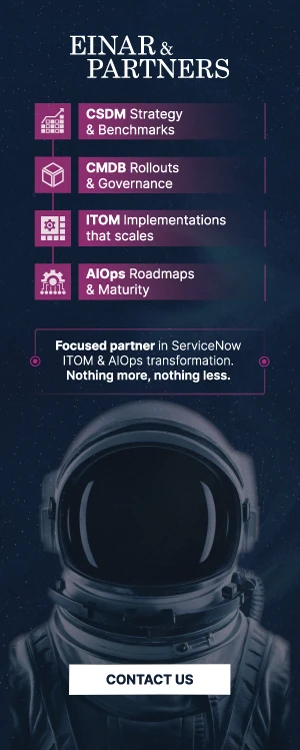
Xanadu could either refer to a 1980 musical film of doubtful following, or the epic city of Shangdu in China. In the famous poem Kubla Khan, Xanadu is a metaphor for “opulence or an idyllic place” which is fitting given the feature-packed release. For ITOM users the Xanadu version contains some of the most significant updates to the Visibility package since tag-based Service Mapping with the potential to seriously impact how projects are executed.
In this article, we get you up to speed on new features such as the brand new Discovery Admin Workspace, how companies can map unknown IPs and devices, perform Service Mapping without Discovery, and much more. It’s safe to say that the Xanadu release will significantly impact project implementations, benefiting customers and partners alike.
Discovery Admin Workspace – stop finding a needle in a haystack
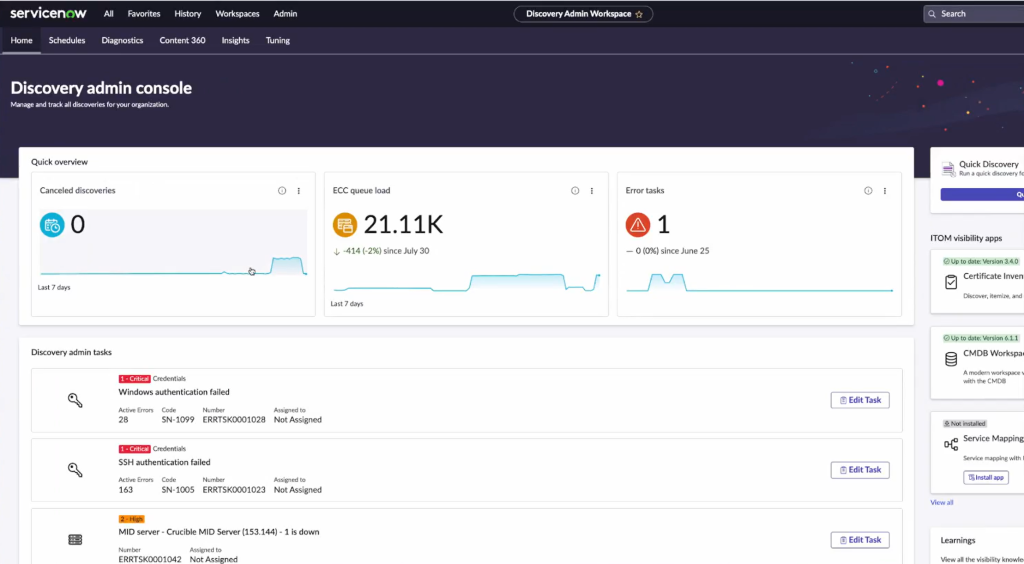
One of the primary challenges with Discovery is the maintenance of the product after implementation. IP addresses change, credentials get rotated, firewall openings get modified, and much more. The IT estate of any modern company is a living organism and for those maintaining Discovery this means regular maintenance. However, that maintenance comes with challenges in the form of troubleshooting, inspecting XML records and trying to make sense of why a Discovery schedule suddenly stopped working.
Since I started working with ITOM Discovery, the Discovery dashboard and maintenance methods have remained fairly static. To give a bit of context, I’ve been working with the product for over a decade and was part of its engineering team.
Discovery Admin Workspace will double productivity
In summary, the Discovery Admin experience will get a complete overhaul. Although the number of features is too many to list here, we’ll cover some of the key highlights. It should be noted that most significant Discovery implementations, at minimum, require 0.5 FTE (full-time employee) and, for many deployments, one full-time resource. Most of that time is spent on troubleshooting and maintenance, not innovation.
Improved Schedule Management
Troubleshoot, fine-tune and optimize your Discovery Schedules for real. In the new Discovery Admin Workspace, you can get full-blown insights into your schedule on a new level. Each schedule can be:
- Broken down by location
- Detailed Run History
- Data & Insights (Errors, Total Devices, Total IPs, Alive IPs)
- Shazzam Insights
Find alive IP’s and know the unknowns through Shazzam Status & Insights
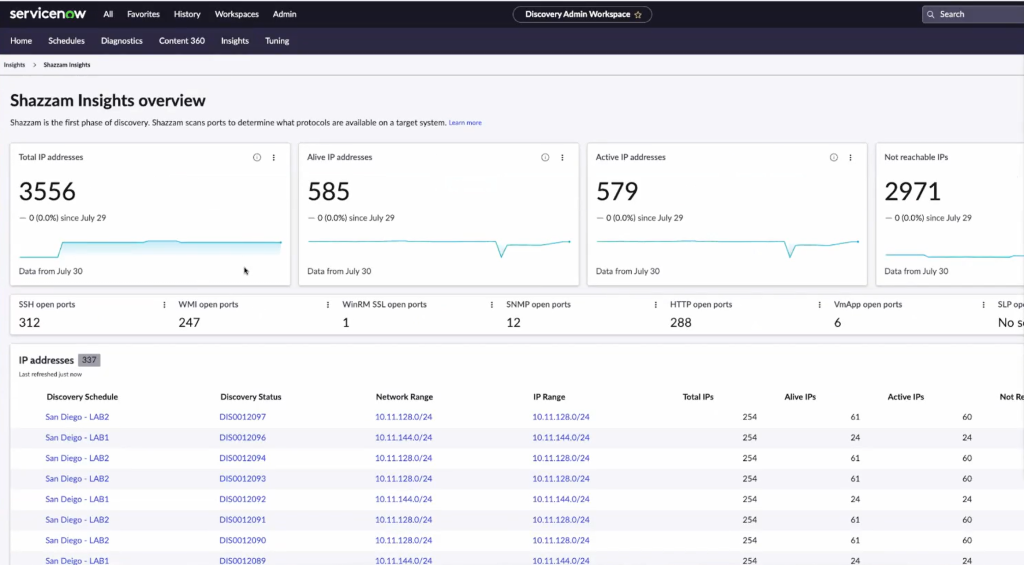
A major reason for many Discovery projects is security. And more specifically, knowing what is actually connected to the network. With the new Xanadu release, you can enter any subnet (such as /24), and you will get a comprehensive overview of IPs that are alive and not. Additionally, you can see precisely which ports are opened, which devices have been discovered and what remains to be discovered.
How is this different from the past? You may wonder.
In the past admins had to manually go into every Discovery Schedule and filter through the ECC queue. Now this is all done through structured, well-organized reporting mechanisms. And not only that, you can also find the DNS names of devices that respond but may not be discovered yet. In other words, if you want to map what you actually have alive out on the network – the data is now at your fingertips.
Discovery Diagnostics – troubleshoot common errors
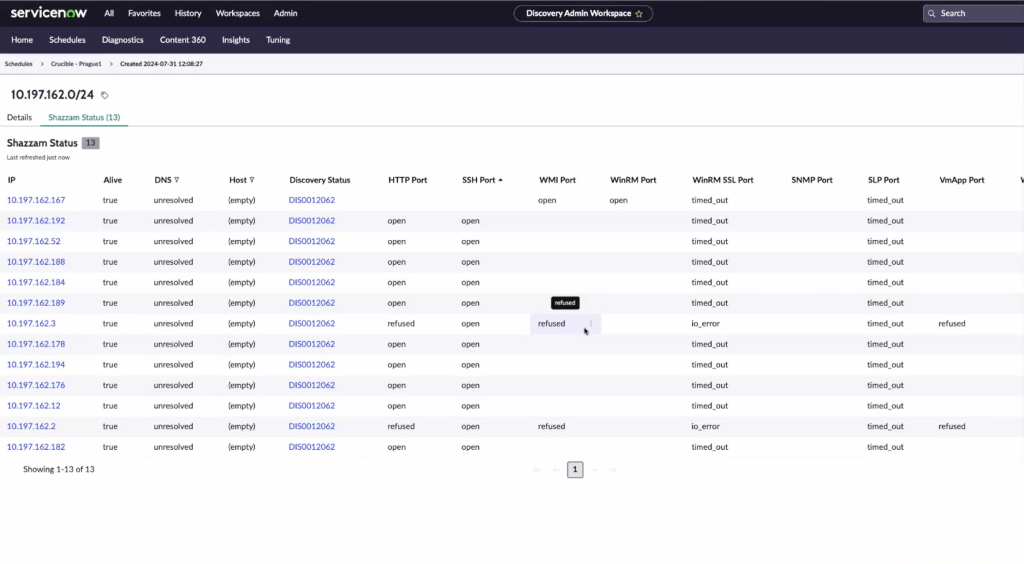
One of Einar & Partners’ most-read pieces of content is an article about Discovery errors. In fact, 80% of support tickets to the ServiceNow Discovery Support team are for common errors that can be fixed by the clients themselves. Through the new Discovery Diagnostics, you can expect to:
- Get a detailed breakdown of errors clustered by Machine Learning and broken down by Discovery Schedules
- The ability to create cases to remediate errors, such as credentials and firewall issues
- Automatic linking to over 2000 public knowledgebase articles to fix your issues
Needless to say, troubleshooting will be seriously speed up through the diagnostics page.
Write your own Discovery Tuning Checks
How can you ensure you follow best practices? Do you have all the properties activated that you should? Are you slowing down your discovery jobs? These are just some of the questions Discovery admins are facing. With the new Xanadu release, ServiceNow gets shipped with automatic diagnostics checks for Discovery to ensure that your schedules and setup is optimized. And the best part? You can write your own checks!
Meaning that if you have a specific ruleset for your company, you can write advanced scripts and diagnostics that run on a scheduled basis and make sure that your Discovery is properly setup. Examples could include things like governance checks, naming conventions, schedule sizes, alive vs dead IPs and more.
Content 360 – cause sharing is caring
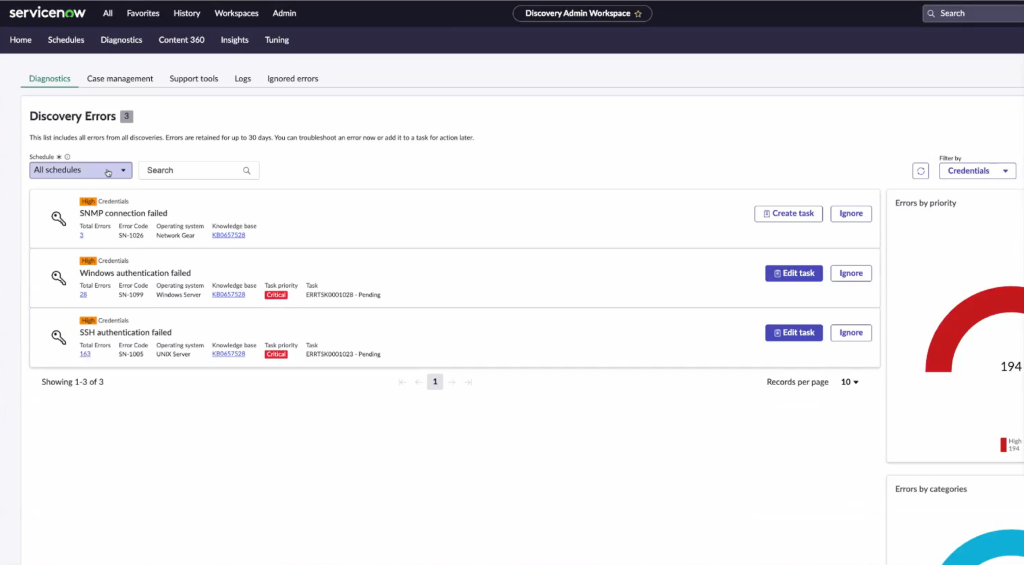
Big enterprises use a lot of obscure software. The amount of running processes can be staggering, and identifying the vendor, version and purpose of a particular software can be tedious. With Content 360 in Discovery Admin Workspace you can opt-in to share your running process information to the industry (in an anonymized way) and in return you get back data – juicy data. From that data you can quickly create patterns and identify unknown applications through application fingerprinting. All through a new dashboard and service!
Service Mapping with Service Graph – speed up time-to-value
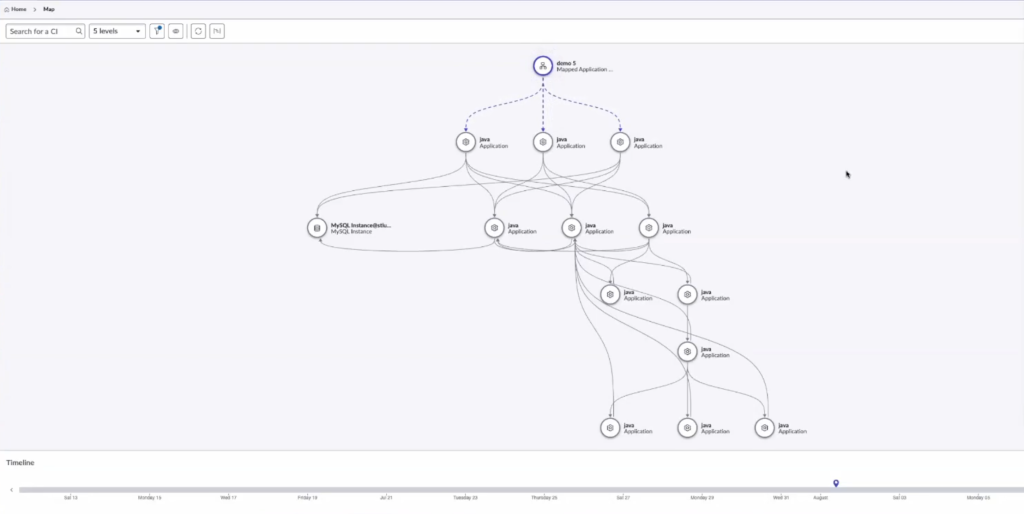
Service Mapping is perhaps one of the most important cornerstones of Service Operations. If you’re serious about Discovering your IT infrastructure, you should also be serious about connecting the infrastructure data to the respective application service (or service instance in CSDM 5). The issue is that Discovery takes time, and many clients don’t use Discovery but want to use Service Mapping.
From the Xanadu release, potentially any source can add data to the TCP/IP traffic information table from which Service Mapping can quickly build a map. This means that you can combine multiple sources to build out traffic-based service maps, not only through Discovery. From a project and implementation perspective, this opens many options.
Many organizations have historically been “forced” to use Discovery instead of integrations because it supports Service Mapping. But not anymore!
Azure Vault to the external credential store
Securing your Discovery implementation is perhaps the most important aspect of any Discovery project. At Einar & Partners, we’ve written extensively about the topic and published multiple models, videos and best practices. But the perhaps most secure way is to not store the credentials at all in your ServiceNow instance, and that can easily be enabled through external credential stores. Starting in the Xanadu release, ServiceNow Visibility will support Azure Key Vault per default.
Let’s Encrypt for Certificate Management
In the Xanadu release, you can start Discovering and managing “Let’s encrypt” certificates through “Certificate Management” in Discovery. In case you are wondering what “Let’s Encrypt” is, it is a non-profit organization that is the largest certificate provider in the world – providing free TLS certs hosting over 300 million websites to date.
Service Reliability Management – Master & Map Microservices
The new storeapp for Site Reliability Operations (called SRM) is part of Event Management. Many companies these days rely heavily on microservices, stateless architecture and API’s – but registering services, handling errors budgets, SLO’s and SLI’s can be a tedious task.
In the latest release, SRE’s and monitoring staff can jump onboard the refreshed and updated Site Reliability Management application. Some of the core features includes aspects such as:
- Creating SRE teams
- Creating and populating microservices fast (combined with tag-based Service Maps)
- Setting SLO’s, SLI’s and error budgets
- On call schedules & escalation policies
Plus much more. The previous application called “Site Reliability Operations” (which we created a masterclass about) pales compared to the new SRM module.
Summarizing the Xanadu release
It is evident that the R&D team from ServiceNow continues to respond to the market trends that IT operations should be easy. The release is packed with exciting features with primary focus on the Visibility package, as well as exciting features for Cloud Accelerator and Insights.
Through the new release, the level of standardization and optimization for ITOM projects will increase in value. The ecosystem will ensure more efficient troubleshooting, following of best practices as well as becoming more self-sufficient with less reliance on external partners/consultants to troubleshoot errors. Additionally, Discovery Administrators will increase their productivity dramatically through the Discovery Admin Workspace.
For clients running Service Mapping, the ability to connect any data to TCP/IP traffic information and quickly build service maps will remove historical dependencies on Discovery, as well as improve the time-to-value dramatically.
Despite all the talk about GenAI and the hyped features of NowAssist, it is clear that the latest release focuses heavily on more realistic use cases that the market has long sought.
Upgrade worthy? Absolutely!








